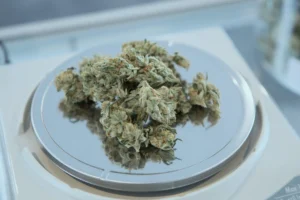How Many States Have Legalized Weed, The landscape of cannabis legalization in the United States has undergone significant transformation over the past few decades. As of now, the question “how many states have legalized weed?” can be answered with a growing number. Cannabis has transitioned from being viewed primarily as an illicit substance to a regulated commodity in various states across the nation.
Current Legal Status of Cannabis in the U.S.
As of 2024, 23 states and the District of Columbia have fully legalized cannabis for adult recreational use. These states allow adults aged 21 and over to possess, purchase, and consume marijuana. Additionally, 38 states permit the use of medical cannabis, providing patients with access to marijuana for therapeutic purposes.
States Where Weed is Fully Legal for Recreational Use
The following states have legalized weed for recreational use:
- Alaska
- Arizona
- California
- Colorado
- Connecticut
- Delaware
- Illinois
- Maine
- Maryland
- Massachusetts
- Michigan
- Missouri
- Nevada
- New Jersey
- New Mexico
- New York
- Oregon
- Rhode Island
- Vermont
- Virginia
- Washington
- Washington, D.C.
- South Dakota (subject to ongoing legal disputes)
Medical Marijuana States
Beyond recreational use, many states have embraced medical marijuana. States such as Florida, Texas, and Pennsylvania have enacted laws allowing for medical cannabis use, with specific guidelines for qualifying conditions.
The Evolving Landscape
The movement toward cannabis legalization is largely driven by changing public perceptions, advocacy efforts, and the potential for tax revenue. Polls indicate that a significant majority of Americans support legalizing cannabis, reflecting a shift from past stigma.
Moreover, legalization has proven to have economic benefits, including job creation in the cannabis industry and increased tax revenue that can be allocated to public services, education, and infrastructure.
Challenges and Considerations
Despite the progress, challenges remain. Cannabis is still classified as a Schedule I substance at the federal level, leading to ongoing legal and regulatory complexities. This classification affects banking, interstate commerce, and federal enforcement policies, creating hurdles for businesses operating in the cannabis sector.
Additionally, social justice issues, including the disproportionate impact of cannabis prohibition on marginalized communities, are at the forefront of the legalization discussion. Advocates continue to push for policies that address these inequities.
Conclusion
As the question of “how many states have legalized weed?” evolves, it’s evident that the trend is leaning towards broader acceptance and legalization. With 23 states and the District of Columbia currently allowing recreational use and many others permitting medical use, the future of cannabis in the U.S. looks promising. However, ongoing advocacy for federal reform and social equity will be crucial in shaping the next chapters of cannabis legislation in America.
As we move forward, the landscape of cannabis legalization will likely continue to change, reflecting the growing acceptance and demand for both recreational and medical use of marijuana.
You Might Also Like These:



